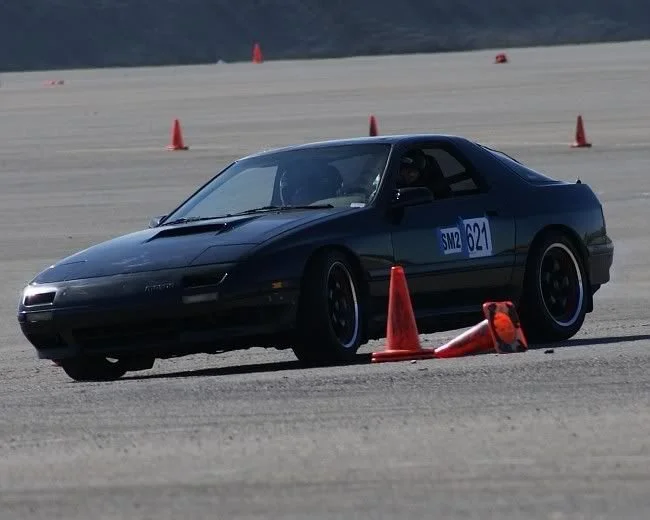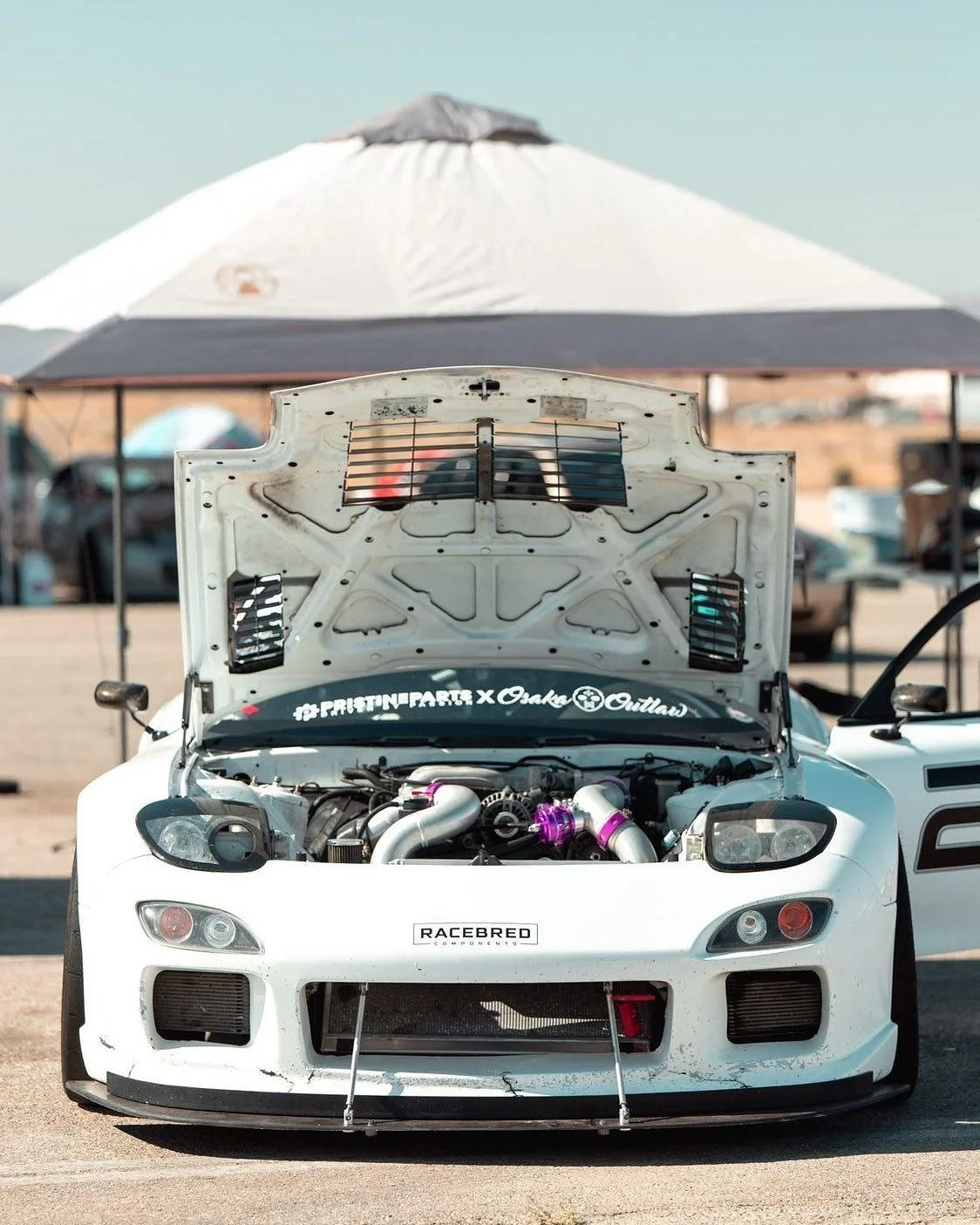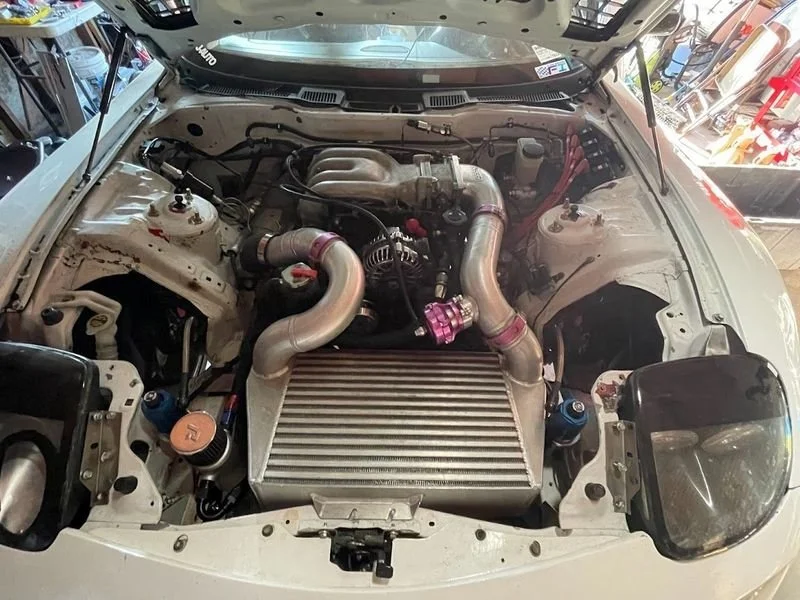Johnson's RX-7: Refreshingly Reliable
Title photo: @Yunnizhai
Misc. photo: CaliPhotography
Running through the spec lists of the boxy cars which caught his eye, he found one member of the Gran Turismo garage with an unusual engine configuration.
Two-rotor, 1300 cc.
That was when the seed was sown. A ten-year-old Johnson Mac had found a car that piqued his boyish interest in machinery. Little did he know that this quirky Mazda would influence the direction of his career, and that, twenty years later, he’d still be tinkering on a rotary-powered car with the same sort of enthusiasm he had at the onset.
Things didn’t take off like he would’ve liked, but perhaps those years of dreaming served to build a foundation he could later build upon. It was the white FC3S from Initial D that got him to scour the local classifieds for an affordable RX-7, but he was a high schooler then without the funds to get one of his own.
First Stage
It wasn’t until a few years passed that he could have one for himself. The primered exterior and stained burgundy interior of his first FC didn’t impress many, but the reliability of the naturally-aspirated 13B engine surprised its new owner. Despite the reputation these rotaries had, Johnson learned that proper maintenance could make one fairly dependable.
That foray with an atmospheric motor encouraged him to venture into turbo territory. With the help of Fris from Lucky 7 Racing, his friend Allen, and the rest of his FAFSA money, Johnson bought an ’87 Turbo II shell, fitted a turbo powertrain, upgraded the footwork, and went autocrossing.
It was only a matter of time before he graduated to track days. After his first time on a road course, he knew he’d found the hobby he’d spend the rest of his days doing. Two frightening crashes and countless nights working in his driveway didn’t deter him from pursuing his passion, but common decency did—temporarily, anyways.
After crashing his second FC, he didn’t want to burden his roomate with another project crowding the driveway, so he parked his rebuild while saving for a house of his own. Johnson had graduated and gotten an engineering job, so the money was coming in, but he was still stretched thin.
Third Stage
Three years passed before he could acquire a house, a grip on things, and, finally, another FC. Right as he was beginning to revive his car habit, his friend from Lucky 7 Racing called about a car that might interest him: a race-ready FD3S that the customer had sold back to the shop. Money was tight, but the timing could not have been better, so Johnson took a leap of faith.
The car had been built to run in NASA TT2 and built to a high standard. In fact, it was mostly complete, save for some paint and wiring issues. It even had a running engine making twice the power of his previous Turbo II’s. He sold off the salvageable bits from the crashed cars crowding his garage and made space for his third-gen.
That was the summer of 2016. Four months and three track days later, the engine blew. “I’d had some issues with breakup at the higher revs—I knew it was wiring-related, but I never found the source of the problem until it blew. “The OE reluctors were used with connectors retrieved from an OE harness, a weakened connection which may cause erratic spark timing when vibration is introduced. We believe this may have caused detonation flattening the side seals on a rotor face of the first engine.”
Fortunately, Fris was willing to help him install a new motor, and over the winter, the two were able to give the FD another shot at life. “I rebuilt the harness from scratch that time, made sure all the connections were reliable, and upgraded to a Haltech ECU with improved engine safeguards. The tune was and is still managed by Nelson Siverio. He is a wealth of knowledge and the reason I’m interested in tuning as well.”
With the new turbo and an E85 tune, the 13B-REW makes 484 horsepower and 400 lb-ft at the wheels.
Making sure the engine ran well within a set range of parameters was the next goal. “You need to perfect ignition timing—that’s a non-negotiable, and then ensure fueling is appropriate at all times. These engines don’t work well outside of a pretty narrow operational window, so Nelson programmed several failsafes into the Haltech 1500 to keep the engine safe.
For example, if AFRs reach 11.8 at full load—11.2 is ideal—then the ECU triggers limp mode (in several stages) and drops the limiter to 3,000 rpm. I also have several different sensors installed throughout the fuel system to ensure I’m getting more-than-adequate pressure at all times. Monitoring the differential fuel pressure has been the best way to get a sense of what’s happening on the fuel delivery side of things.”
The Haltech did more than make his powerplant dependable—it made it tractable, too. Functions like boost-by-gear and boost-by-throttle position help to limit excessive torque and outline a semi-intuitive power delivery. Despite the big single turbocharger’s rapid onset, Johnson’s grown comfortable with the way the car squirms under power—it’s predictable.
“On the mechanical side of things, I installed an OS Giken 1.5-way differential and had it tuned to suit my torque curve. The lock-up is progressive, and the 295-width tires can handle the power if I’m careful rolling on the throttle. Out of hairpins, I still drive it like a turbo car from the ’80s, though.”
Even the modern Garrett GTX3582R isn’t quite as responsive as he’d like. Well, that may be due to the fact that an old-school HKS cast manifold is causing a bottleneck, but he has more pressing concerns before he can address a slightly lumpy power delivery.
The FD3S’ weakpoint, aside from the obvious engine issues, has been the flimsy five-speed—Johnson’s been through a few. His current answer to this persistent problem is not another h-pattern, but a dual-clutch sourced from an F80 M3. As the factory BMW clutch packs can withstand 600 lb-ft of torque, they should be more than stout enough for his purposes. Additionally, the advantage of seven gears and negligible shift times may help keep him in the meat of the powerband more often—thus solving his problems in slow corners.
It’s a tall order that will require the assistance of some transmission specialists who can mate modern BMW with modern-classic Mazda, but Johnson’s engineering insights and passion for this platform should carry him through the frustrating pioneering period. His commitment to the rotary sports car over the last two decades had made him into more than a mere tinkerer. He’s almost a qualified technician now, and his last forty track days all on the same motor stand as evidence to his understanding of this lovable, finicky oddball.







